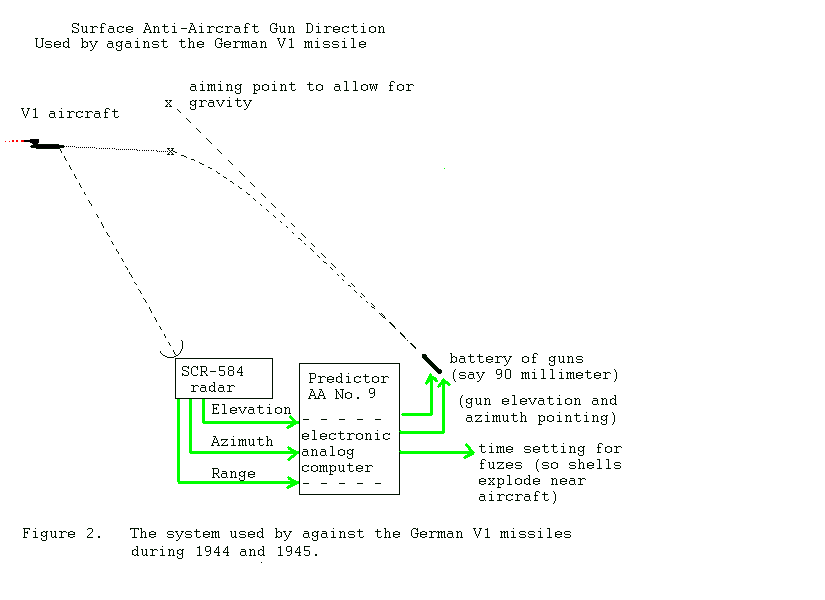Return to Home,
Goto Next Section
Summary
That marvelous Wikepedia has a good article on the
History of Radar
This section is organized as follows:
But first we must have a little fun.
No disrespect, but bet that if the aircraft was flying more than 3,000 feet away,
Anti-Aircraft defense needed Major Improvement After World War II
For a more formal presentation of the situation go to:
- "Archie to SAM" Ground-Based Air Defense
- web booklet
Vigilant and Invincible
(local back-up)
so that defensive forces can detect and track aircraft
- at greater distances
- at night and through smoke, haze and clouds
- obtaining accurate range

Harold Crawford says "A 40 MM gun that I used to be on,
when I was in the AAA units back in the 50s."

This is the 770th AAAGBn with 120 mm (almost 5 inch diameter) anti-aircraft guns at firing
practice at Yakima Firing Center, ca. 1952. [There should be an M-33 radar/gun-director somewhere,
I guess off camera.] Courtesy Al Miles via
Mark Morgan
The first (major) use of aircraft for combat was in World War 1. Of course ground forces wanted to shoot down enemy aircraft that were spying-on/harassing them. Larger bore guns could shoot further, but had enormous recoil that could cause the gun to be disturbed so needed re-aiming after every shot - slowing down firing.A History Channel presentation recently said that just before World War 1, the French invented/perfected the recoil mechanisms for large guns - enabling rapid fire because the recoil did not (in general) disturb the gun aiming so that the gun did not have to be re-aimed after each shot - This revolutionized artillery gun making and firing.
( G Dessornes - gaselen at earthlink dot net - is looking up information about AAA in World War 1 ) (as of June 2011) The following block is from him.
in the mean time.. Here is a [French] 75mm auto-canon AAA in action in 1917-1918 WWI in France.
a short (400 K Byte) action movie .wmv format
Note the wiring on top of picture; those are cables from the "director" sending data to the gunners : for
- Azimuth
- Elevation
- and fuse timing (not seen here) .
All that is missing is the sound...You will notice this rapid firing 75 mm (3 inch) gun/cannon rotating platform is mounted on a rather plain looking truck and is not breaking the truck apart. The new recoil mechanism smooths out the massive one millisecond shock of the propelling charge into a much more manageable 100 millisecond average shock. :-)) ("Out-riggers" connecting the gun platform and truck to the ground, bypassing the truck springs and tires, are visible.)
The operators are intentionally changing the aiming point in response the electric signals from the "director". With a little luck we will get more info on the director :-))
G Dessornes - gaselen at earthlink dot net - sent some more images
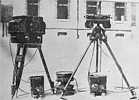
French Army document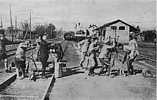
corrector in action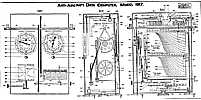
from US AAA journal from Fort Monroe in 1920
(principle) of a mechanical mutiplier
angular speed ( electrical) used in the Brocq corrector.
and some Optical Range Finders - aren't you glad for radar ranging ?? ;-))
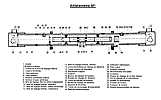
altitelemetre
DCA-ONERA-telemetre-100_0592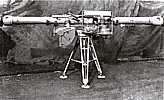
Telemetre&PC-1932
Fort-Bliss-telemetre-90-1
Telemetre-90mm-emplacement-FM 5-15-1944-1
Telemetre-US-pour-90mm
and some hardware

75 voltm&cable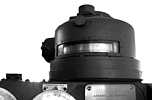
data-meter-1
data-mete-drawing
Most Aircraft Reached their Targets in World War II
During the 1942 Japanese conquest of Manila in the Philippines, the Japanese planes simply flew higher than the maximum vertical range of the United States anti-aircraft guns. Many people felt that since the guns had no effective pointing system against aircraft targets, the Japanese planes could have flown anywhere quite safely. Also see a Pearl Harbor storyThis anti-aircraft situation was typical. Ground fire against aircraft looked impressive, but downed few planes. Fighter planes were more effective, but even with combined fighter planes and anti-aircraft guns, most bombers (German, British, American, Japanese) reached assigned targets and dropped their bombs.
In most air raids (by either side) more than 90 percent of the bombers returned to safe airports. Air crews probably felt that a 10 percent loss was very high - but defenders took a pounding. Down town London was mostly gutted - most large German cities were heavily damaged - most Japanese cities were heavily damaged before the atom bomb really did the convincing.
Author gets flack. Several people felt the above is not strictly true. They point to the very successful air defense of the Normandy landing areas in June of 1944. The Allies put/kept all their available fighter planes over the Normandy beach heads. One report says that 11,000 Allied aircraft were involved with the Normandy invasion. Yes, there were few reports of German aircraft. One British fighter wing history reports that the Germans mounted about 100 sorties, but does not mention combat with them. Allied ground and naval forces were not bothered enough by German aircraft to write anything about them in the battle summaries. One can still claim that the threat of anti-aircraft fire was not what kept the Germans away. I propose that German command confusion (Hitler) and 11,000 Allied aircraft kept most of the German aircraft away from the Normandy invasion.
The V1 - 1st Cruise Missile
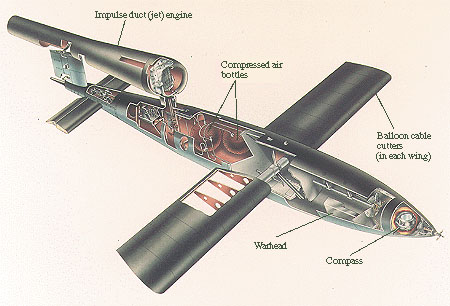
Image stolen from page Fi-103/V-1 "Buzz Bomb" of Warbirds Resource Group - permission has been asked - I don't suggest this method of business, but I just hate it when good stuff disappears from the Internet.This is a German "V-1 Training film with English sub-titles. Video running time is 29 minutes. The gyro guidance system starts about 10 minutes in.
V-1 Buzzbomb: A Technical Breakdown of the Vengeance Weapon - 24 minutes
On June 13, 1944, Germany started firing V-1 aircraft into London. The V1 'buzz bomb' was the first cruise missile. It was a low flying (300-3000 ft.) fast for its day, (360-400 mph) un-piloted aircraft with a warhead of almost one ton. During the next 9 months, about 8000 were fired against London (and another 6000 against other targets in Allied held Europe). The V1s killed about 2000 people in London, wounded about 25,000 and did serious damage. (The damage and casualties would have been higher if the British had not fooled the Germans into setting the target range of the V1s a little short.)
Getting ready for the V1 attack
In 1943, Allied photo reconnaissance spotted German V1 development efforts, and the British took the threat very seriously. In 1943, the British anti-aircraft czar General Frederick Pile ordered a large number of fire control computer ("predictor") systems from Bell Telephone. (During World War II, the Bell Telephone company (and Western Electric, its manufacturing arm) had designed and manufactured several anti-aircraft fire control systems for anti-aircraft guns.) Nine months later (June 1944, just in time for the German V1 attack) the "predictor" systems were being installed in England. (How is that for quick turn around?).
(General Sir Frederick Pile later wrote the book "Ack-Ack: Britain's Defence against Air Attack during the Second World War", available on the British used book market. I have not seen the book as of late 2002.)
(year 2015) k4of@hotmail.com recommends Wikipedia's V-1 flying bomb
